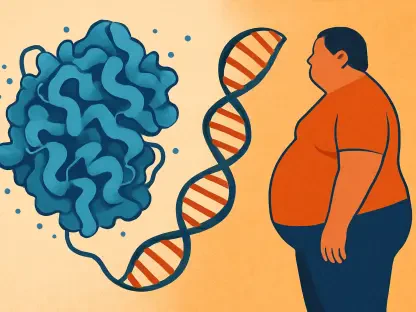Short introductionToday, we’re thrilled to sit down with Ivan Kairatov, a seasoned biopharma expert with extensive experience in research, development, and innovation within the industry. With a keen eye on the evolving landscape of obesity treatments, Ivan offers unique insights into the groundbreaking work happening at Kailera Therapeutics, a company making waves with their recent $600 million funding round and promising clinical results. In this conversation, we’ll explore the science behind their lead drug, the significance of their funding success, and the future of obesity treatment on a global scale.
Can you start by giving us an overview of Kailera Therapeutics and what drives your mission as a company?
Absolutely, Chloe. Kailera Therapeutics is focused on tackling one of the most pressing health challenges of our time—obesity. Our mission is to develop innovative therapies that not only help people manage their weight but also improve their overall metabolic health. We’re building on cutting-edge science to create treatments that target key hormones involved in appetite and metabolism. Our goal is to offer solutions that are effective, accessible, and transformative for patients worldwide.
How did Kailera manage to secure such a substantial $600 million in Series B funding, and what role did major investors play in this achievement?
It’s been an incredible journey. The $600 million Series B round reflects the confidence that investors have in our vision and our lead drug’s potential. We were fortunate to have Bain Capital Private Equity lead the round, alongside other significant players like Adage Capital Management and government-backed funds. What really helped was our ability to show strong clinical data from our Phase 3 trial in China, coupled with a clear plan for global expansion. Investors saw the growing demand for obesity treatments and believed in our approach to meet that need with innovative solutions.
What was it about Kailera’s strategy or results that gave investors such strong confidence in your future?
I think it boils down to a combination of our promising clinical results and the massive unmet need in obesity treatment. Our lead drug, KAI-9531, showed an average weight loss of 18% over 48 weeks in our China trial, which is competitive with some of the best therapies out there. Beyond that, investors appreciated our comprehensive pipeline, including oral formulations and triple-acting therapies. They saw us not just as a one-drug company, but as a platform for sustained innovation in a market that’s only going to grow.
Can you explain how KAI-9531 works and why its mechanism is often compared to existing therapies like Zepbound?
Sure, Chloe. KAI-9531 is an injectable therapy that targets two key hormones: GLP-1 and GIP. These hormones play a critical role in regulating appetite, insulin secretion, and energy balance. By activating both pathways, KAI-9531 helps reduce hunger and improve how the body processes energy, leading to significant weight loss. It’s similar to Zepbound in that it uses this dual-action approach, which has proven to be highly effective in clinical settings. We believe this mechanism positions KAI-9531 as a strong contender in the obesity treatment space.
Why is targeting GLP-1 and GIP hormones so crucial for developing effective obesity treatments?
Targeting GLP-1 and GIP is a game-changer because these hormones work together to address the root causes of obesity. GLP-1 slows down gastric emptying and signals the brain to feel full, while GIP enhances insulin release and impacts fat metabolism. When you stimulate both, you get a synergistic effect that can lead to more substantial weight loss and better metabolic control than targeting just one hormone. It’s about mimicking the body’s natural systems in a way that helps patients achieve sustainable results.
The Phase 3 trial results in China showed an impressive 18% average weight loss over 48 weeks. What do these outcomes mean for patients and for Kailera’s future?
These results are incredibly exciting for both patients and our team at Kailera. For patients, an 18% weight loss over less than a year can be life-changing—it’s not just about the number on the scale, but also about reducing risks for conditions like diabetes and heart disease. For Kailera, this data validates our approach and sets a strong foundation for seeking approval in China. It also gives us momentum as we plan larger global trials. It’s a clear signal that we’re on the right track to making a real impact in this field.
Looking at the FDA’s potential requirements for U.S. approval, how is Kailera preparing for a larger, longer, and multi-country study?
We’re fully aware that the FDA will likely want a more extensive study before considering U.S. approval, and we’re gearing up for that. Our plan is to launch international Phase 3 studies by the end of 2026, using the recent funding to support this expansion. We’re designing these trials to include diverse populations across multiple countries, with higher doses and longer treatment durations to meet regulatory standards. It’s a big undertaking, but we’re committed to getting it right and ensuring the data is robust enough for global markets.
Beyond KAI-9531, you’re also developing a GLP-1 pill and a triple-acting therapy. Why are these additional projects so important to Kailera’s long-term vision?
Diversifying our pipeline is a core part of our strategy. While KAI-9531 is our lead candidate, we know that patients have different needs and preferences. A GLP-1 pill, for instance, could offer a more convenient alternative to injections, potentially improving adherence. The triple-acting therapy aims to push efficacy even further by targeting additional pathways. These projects are about giving patients options and staying ahead of the curve in a competitive field. We want to be a leader in obesity treatment, not just a player.
What advantages could an oral version of a drug like KAI-9531 bring to patients compared to an injectable form?
An oral version would be a huge step forward in terms of convenience and comfort. Many patients are hesitant about injections due to needle phobia or the hassle of administration. A pill could make treatment feel less invasive and easier to incorporate into daily life. It also has the potential to reach a broader audience, especially in regions where access to healthcare providers for injections might be limited. If we can maintain the same efficacy in an oral form, it could really transform how obesity is managed.
What is your forecast for the future of obesity treatments, especially with the rapid advancements and growing investment in this space?
I’m very optimistic about where this field is heading. Obesity treatment is becoming a major focus in healthcare, with more investment and innovation than ever before. Over the next decade, I expect we’ll see even more personalized approaches—therapies tailored to individual metabolic profiles or genetic factors. We’ll also likely see a shift toward combination treatments that address multiple aspects of the condition. At Kailera, we’re excited to be part of this wave, and I believe the advancements we’re working on will play a significant role in improving outcomes for millions of people worldwide.









